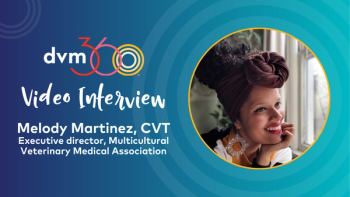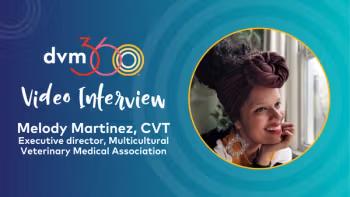
What lies beneath: Dental radiography (Proceedings)
Changes in the dentistry service Dentistry within the general practice has always been regarded as a simple teeth cleaning.
Changes in the dentistry service
Dentistry within the general practice has always been regarded as a “simple teeth cleaning”. The patient is anesthetized and the crowns are cleaned with an ultrasonic scaler and the patient is recovered. This approach for many years was the acceptable standard of care within the dental service. However, we have learned over the last several years that there is so much more that we could be doing for our patients. The approach has been changing across the country from a “teeth cleaning” to a prophy and assessment, with the emphasis being on the assessment portion. If we assess properly, we can then diagnose and treat accordingly to provide a higher standard of care for the dental patient.
Imagine a patient with clinical signs including polyuria, polydipsia, weight loss, vomiting. The top “rule outs” for this patient would include diabetes or renal disease. In order to make a definitive diagnosis, the best next step would be to perform a full blood panel. Now imagine that there were no blood machines available to run the bloodwork. This makes treating this patient effectively extremely difficult. Blood machines are standard equipment in most practices. Dental radiology needs to be regarded just as important to the dental service.
Importance of dental xrays
Dental radiology is the single most important diagnostic tool in the dentistry service. Statistically, 70% of cats and 80% of dogs have some degree of Periodontal disease. If periodontal disease is caught early, it can be treated and prevent tooth loss. Most clients would agree that prevention of tooth loss is important to them and their pets, as well as, keeping their pets pain free and comfortable. The standard of care in most practices that have dental radiographs is to take radiographs on an “as needed” basis. For instance, if there is any redness, swelling, oozing or other noticeable lesions seen on an oral exam, then a radiograph is warranted. However, a study at UC Davis showed that 28% of dental lesions in dogs and 42% in cats are missed on oral exam. The AVDC recommended standard of care is full mouth radiographs on every patient to detect pathology.
Equipment
Digital software, sensor and laptop are standard equipment for making dental radiographs easy to implement into the practice. Film and developing fluids are considered outdated and cumbersome, as well as, time consuming. Digital equipment speeds up the process considerably, making it more efficient and cost effective for the practice. A Dental xray generator is also needed. Any generator can be used with any software and sensor.
The two systems that are most popular are the direct and indirect. A sensor that plugs directly into the computer via USB is a direct system. It produces an image within seconds. Phosphur plates that are fed into a digitizer to produce a digital image is an indirect system.
Radiographic techniques
There are 2 techniques that are used primarily to image the entire oral cavity. The parallel technique is the simpler of the techniques to master, however, this technique can only be used in the caudal mandible. The sensor is placed parallel to the teeth being imaged and the tube head is placed perpendicular to the sensor.
The bisecting angle technique is more of a challenge to the user. The tube head is placed perpendicular to the angle that bisects the angle that is created by the long axis of the tooth and the sensor. This definition lends itself to a large amount of confusion. It can be difficult to determine the angles and bisecting angles and therefore, difficult in placing the tube head correctly to obtain a diagnostic image. A more simplified version is illustrated when the tube head is thought of as the “sun”, the sensor is the ground or horizon, the tooth is the object, and the shadow that is cast by the “sun” is the xray image. If an object is out in the sun at high noon, the shadow is very short. Conversely, if the object is out at 6 pm, the sun is low in the sky and shadow that is cast is elongated. The ideal angle to place the tube head or “sun” is somewhere between noon (90 degrees off the horizon) and 6 pm (30 degrees off the horizon). A resource for correct positioning is the Radiographic positioning guide by Brett Beckman DVM, FAVD, DAVDC, DAAPM.
Patient positioning is important, as well, to eliminate as many angles as possible to simplify the process even further. When imaging the maxilla, the patient is placed in sternal recumbency with a rolled towel placed under the chin to position the maxilla as parallel to the horizon as possible. To image the mandible, the patient is placed in dorsal recumbency with a rolled towel under the neck to extend the mandible parallel to the horizon.
Troubleshooting
A significant component to taking dental radiographs is troubleshooting. When an image is taken but is not diagnostic, the key is to know what adjustment to make in order to take a diagnostic film in the very next shot. Effective troubleshooting can decrease the frustration of taking dental radiographs, as well as, decrease the amount of time to complete a full mouth series.
There are typically 2 errors that are made. The first error produces an image that is distorted. The image is either elongated or foreshortened. When this type of error occurs, the tube head will need to be adjusted to eliminate the adjustment. If an image is elongated or “stretched out”, the angle of the tube head should be increased by at least 5 or 10 degrees. For example, if the image was taken at 50 degrees, increase the tube head angle to 60 degrees. If an image is foreshortened or “stubby”, decrease the angle of the tube head. The second error produces an image that is not distorted, but is “cut off” or missing from the image. The adjustment to correct this error involves repositioning the sensor in relation to the tooth or teeth being imaged. The best example of this occurs usually when imaging the apex of the canine. The canine tooth in an average or large size dog is longer than a typical Number 2 sensor. In most cases, the sensor needs to be moved caudally in order to have enough sensor in place to “catch the shadow” of the apex.
Evaluation of radiographs
When evaluating radiographs, it's important to be able to recognize normal anatomy versus pathology. The structures that are evaluated include the tooth itself, the periodontal ligament space, the pulp chamber, the apices of the tooth, and the bone around the tooth. Subtle to significant changes in these structures indicate varying degrees of pathology.
Common pathology
The most common pathology found on dental radiographs include periodontal lesions, endodontic lesions, tooth resporption, neoplasia, impacted and non-vital teeth. Specific changes in bone, periodontal structures and apices can indicate different pathology.
Newsletter
From exam room tips to practice management insights, get trusted veterinary news delivered straight to your inbox—subscribe to dvm360.






